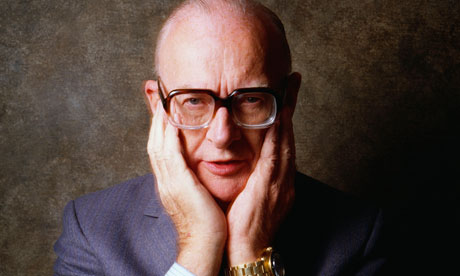
The friendly rivalry between the two giants of science fiction, Arthur C Clarke and Isaac Asimov, was legendary among genre fans. It reached such a peak that some time in the late 1960s the two even agreed to a tongue-in-cheek agreement about their respective statuses, The Clarke-Asimov Treaty. They vowed that Clarke would always refer to Asimov as the best science writer and Asimov would call Clarke the best science fiction writer.
There were no sub-clauses about sharing awards out between them, but the fact that Clarke won his first Hugo award for best novel the year after Asimov has a pleasing symmetry. So pleasing, in fact, that if The Gods Themselves and Rendezvous With Rama were different books it would be tempting to ascribe their success to a sentimental desire among the SF community to give the ageing writers the kind of lifetime achievement award that occasionally makes the Booker prize seem ridiculous. But the fact is that The Gods Themselves is excellent, and Rendezvous With Rama is a stone-cold classic. There's no doubt that Clarke won the Hugo on merit – not to mention the Nebula, British Science Fiction award, Jupiter award and Locus award. This book is, as Martin Amis wrote back when he had a science fiction column in the Observer, "triumphant".
The premise of the novel is at once straightforward and ingenious. It takes the Big Dumb Object familiar from so many SF films and books and makes it bigger. MUCH bigger. The first we know of it is when it is detected by the space study programme Project Spaceguard (a kind of oh-no-meteor-heading-for-Earth early warning system, no doubt inspired by Clarke's own pioneering work on radar during the second world war). Soon it transpires that the object is a cylinder – 54km long, 20km in diameter – and it's heading straight for the sun. Naturally, everyone on earth gets quite excited and the nearest spaceship is sent to explore.
What follows is a lean and straightforward description of what lies within that cylinder – the Rama of the title. It turns out to be a kind of world turned outside in, with a sea that arches above the explorers' heads, apparent cities dotted around the inner circumference and lighting provided by giant trenches in the walls. The characters are sketched sparingly and are all relatively sober scientists. There are no real bad guys (although the inhabitants of the planet Mercury do inject some drama when they send a missile to blow Rama up), there are no big love stories, no evil aliens. The focus is all about unfolding the mystery of Rama; the awe it inspires and the process of coming to terms with the mind-boggling possibilities it presents. It works a treat. This is top grade "wild surmise, silent, upon a peak in Darrien" material. Among the best I've read.
Rendezvous with Rama does present a few problems – although most of them just add to the fun. One of the things most often highlighted in the many ecstatic reviews I've read is the "plausiblity" of Clarke's science. I'm not, alas, qualified to pronounce on the mechanics of multi-kilometre flying objects intending to harness the power of our sun to sling them into distant universes – but what I can say is that when you step back from the narrative, the mechanics don't all stack up. Clarke does a fine job of telling us about the centrifugal forces that create Rama's gravity, the strange effect they might have on the way water flows around the alien landscape and about the possible ecological cycles within the giant cylinder. But there are many things he doesn't explain. I was struck, for instance, by the explorers' complete lack of curiosity about what materials might have been used in Rama's construction. If something looks like glass, they just assume it is glass, for instance, while we learn no more about the exterior than the fact that it is "metal". Surely one of the first things they'd want to know is what kind of substance could have survived so many millions of years in space, flying close to so many suns. It also seemed odd that the spacemen had no way of flying around the interior of the ship.
Yet, as noted, such problems become part of the book's appeal. The fact that Rama provoked me to think about such logistical issues shows how strong a grip it exerted on my imagination. Most of my speculation about the thing ended up in brainache, but that also added to my general satisfaction and sense of wonder.
More importantly, even if it's possible to take shots at it from a distance, the story is convincing while Clarke spins it. As Rama is unveiled before the explorers, it seems real. Indeed, showing the mini-planet through the eyes of these science-minded astronauts is a masterstroke. The more they try to stay calm and translate what they are seeing in rational terms, the more our own excitement and sense of the numinous grows.
And on the subject of mysterious and unfathomable presences, one of the most charming things about the book is the feeling one gets about the author's own delight in his creation. True, like many a beloved grand uncle, he cracks some appalling jokes, but it's a pleasure to be in the company of such genial intelligence. Clarke is someone who can expand your horizons.
Next time: Ursula K Le Guin – The Dispossessed.

